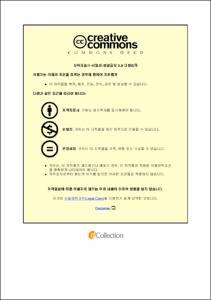중첩된 구리-알루미늄(Cu99.9-A5052) 판재의 전기저항가열 표면마찰 스폿용접(RSFSW)에 관한 연구
- Alternative Title
- A Study on Electric Resistance Heated Surface Friction Spot Welding Process of Overlapped Cu99.9-A5052 Sheets
- Abstract
- In this work, a novel spot welding technology has been developed for joining pure copper/aluminum alloy sheets. A steel electrode with a friction rotating pin and a CuCrZr electrode act on the outside of the pure Cu/Al alloy sheets, respectively.
This spot welding technology has two heating stages; firstly, resistance heat generated by the electric contact resistance between the steel electrode and the copper sheet and the high electric resistance of the steel electrode at a high alternating current of 8 kA. Secondly, after cutting welding current, the friction pin quickly rubs the outer surface of the copper sheet at a plunge rate of 4mm/min and a rotational speed of 1600 rpm, thereby producing a large amount of frictional heat. As a result, under the combined action of the resistance heat generated by 30 cycles of alternating current and the friction heat generated by the friction time of 1.5 seconds, the temperature of Cu/Al welding interface reached the melting point of the aluminum alloy, thereby realizing fusion welding.
This spot welding technology has some welding variables such as current value, energizing cycles, rotational speed and friction time. Both current value and energizing cycles can affect the resistance heat, and the rotational speed of rotating pin and friction time also influence the generation of frictional heat. The resistance heating before the frictional heating not only has a preheating effect on the Cu/Al weld interface, but also can prevent the loss of frictional heat during the friction stage. However, the resistance preheating also softens the copper sheet, thereby affecting the contact stress and friction coefficient between the friction pin and the copper sheet, which will adversely affect the generation of frictional heat. Therefore, the optimal conditions can be found through the design of experiments method to balance the advantages and disadvantages of resistance preheating to the welding process.
The new spot welding technology has several advantages as compared to the friction stir spot welding. For example, whirling structure can be formed under the action of plastic flow of material caused by rotational friction. It can increase the area of welding interface and improve the electrical conductivity and thermal conductivity, thereby enhancing the welding efficiency. In addition, since the welding temperature between Cu/Al weld interface mainly comes from the heat transfer from outer surface of copper sheet, It can avoid the drawbacks of large welding spacing caused by shunt effect for traditional resistance spot welding. In particular, the shorter weld spacing is very beneficial to the welding inside the automotive battery when the diameter of the battery cells inside the battery packs is generally small.
Finally, the current study suggested that the new spot welding technology can improve the mechanical and electrical properties of non-ferrous metal sheet welded joints.
- Issued Date
- 2022
- Awarded Date
- 2022. 8
- Type
- Dissertation
- Publisher
- 부경대학교
- Alternative Author(s)
- 순 샤오광
- Affiliation
- 부경대학교 대학원
- Department
- 대학원 기계공학과
- Advisor
- 진인태
- Table Of Contents
- 제 1 장 서 론 1
1.1 연구 배경 1
1.2 Cu/Al합금 판재 접합 연구 현황 4
1.3 연구목적 및 내용 11
제 2 장 RSFSW의 기본 이론 및 시뮬레이션 해석 14
2.1 RSFSW의 원리 및 기술적 특성 14
2.1.1 RSFSW에 의한 스폿용접 개요 14
2.1.2 RSFSW에 의한 스폿용접 공정 20
2.2 RSFSW 스폿용접부 해석에서의 기본 수학적 모델 22
2.2.1 스폿용접의 열원 22
2.2.2 전기장 및 온도장의 방정식 40
2.2.3 탄소성 응력-변형율 관계 41
2.2.4 다중물리해석 43
2.3 RSFSW모형 설계 45
2.3.1 다중물리해석 모형의 경계조건 45
2.3.2 해석 재료의 물성값 설정 49
2.3.3 RSFSW 용접 공정에서의 2D 시뮬레이션 해석 54
2.3.4 RSFSW 용접 공정에서의 소성유동 3D 시뮬레이션 해석 63
2.4 주인자에 의해 시뮬레이션 온도 분포 결과의 분석 및 비교 66
2.4.1 시뮬레이션의 주인자변수를 찾기 위한 너겟의 직경크기 해석 66
2.4.2 통전가열시간에 따른 너겟의 직경크기 시뮬레이션 해석 68
2.4.3 마찰가열시간에 따른 너겟의 직경크기 시뮬레이션 해석 71
2.4.4 통전 전류의 크기에 따른 너겟의 직경크기 시뮬레이션 해석 74
2.4.5 마찰 회전수도에 따른 너겟의 직경크기 시뮬레이션 해석 77
2.5 RSFSW과 SFSW 시뮬레이션 결과의 분석 및 비교 80
2.6 결언 83
제 3 장 Cu/Al판재의 RSFSW용접실험 결과 및 고찰 86
3.1 RSFSW 스폿용접 실험장치 86
3.2 RSFSW 스폿용접 실험조건 91
3.3 직교배열표에 의한 실험계획 및 분석 93
3.3.1 직교배열표에 의한 실험계획 93
3.3.2 실험결과에 의한 RSFSW용접 영향인자 분석 94
3.3.3 실험을 통해서 최적수준조건을 체크 104
3.4 RSFSW으로 용접된 시편의 용접계면 현미경 단면사진 109
3.5 스폿용접방법에 따른 실험 결과 및 비교 고찰 113
3.5.1 RSFSW과 SFSW의 용접 전단 파괴하중 비교평가 및 고찰 113
3.5.2 RSFSW와 열 보상 스폿용접의 비교평가 및 고찰 117
3.5.3 RSFSW과 FSSW의 용접방법의 비교평가 및 고찰 119
3.5.4 Cu/Al 스폿용접 밀도에 대한 RSFSW용접 방법의 적응성 121
3.6 결언 127
제 4 장 결론 131
참 고 문 헌 132
Abstract 139
- Degree
- Doctor
- Files in This Item:
-
-
Download
 중첩된 구리-알루미늄(Cu99.9-A5052) 판재의 전기저항가열 표면마찰 스폿용접(RSFSW)에 관한 연구.pdf
기타 데이터 / 21.52 MB / Adobe PDF
중첩된 구리-알루미늄(Cu99.9-A5052) 판재의 전기저항가열 표면마찰 스폿용접(RSFSW)에 관한 연구.pdf
기타 데이터 / 21.52 MB / Adobe PDF
-
Items in Repository are protected by copyright, with all rights reserved, unless otherwise indicated.